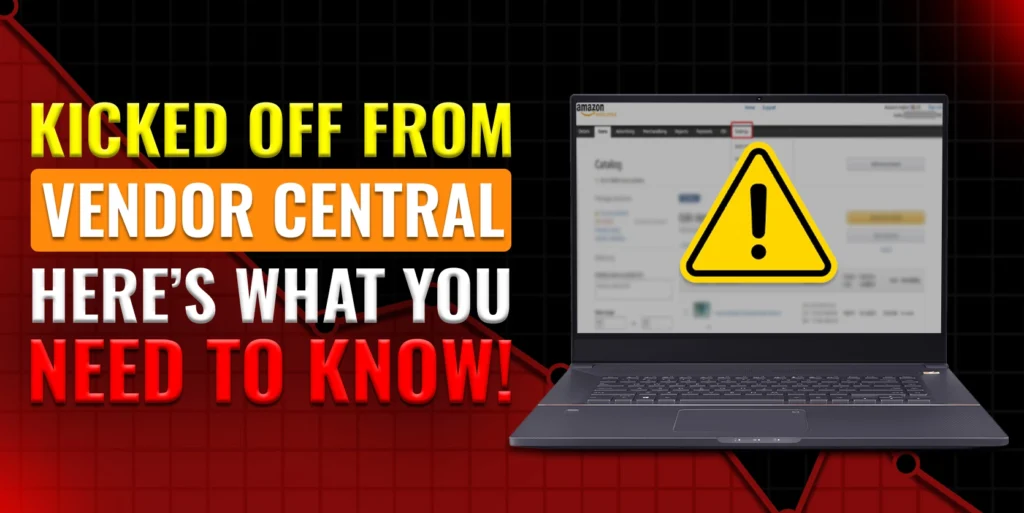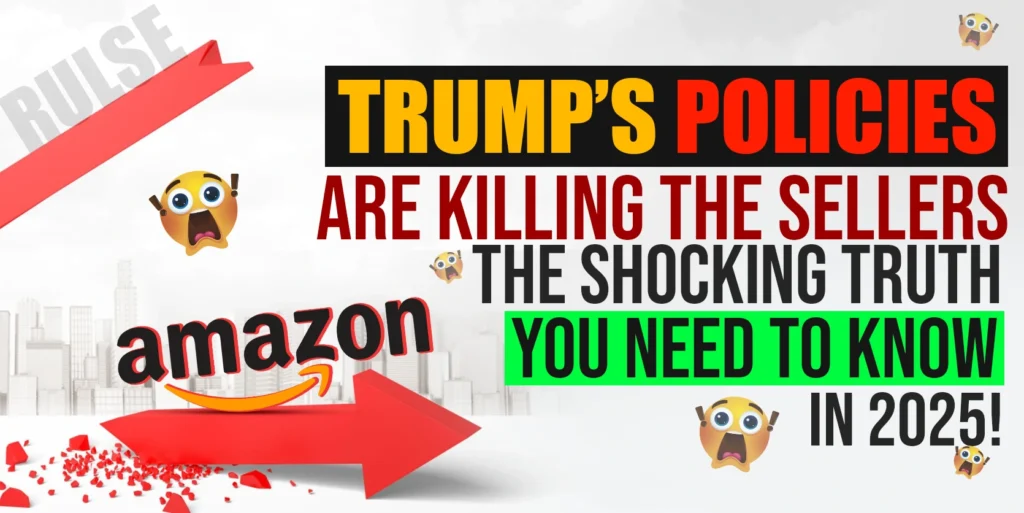In recent months, Amazon has been making major changes to its Vendor Central platform, leaving many small and medium-sized vendors scrambling to adjust. With the critical Q4 shopping season underway, this change couldn’t have come at a worse time. Many vendors who have relied on Amazon’s Vendor Central for years were recently informed that their relationship with Amazon would be terminated, effective November 9th, 2024. This shake-up is causing widespread concern among vendors, but it also opens new opportunities. In this blog, we will explore what these changes mean for vendors, why Amazon is making them, and how you can successfully transition to Seller Central.
What Happened to Vendor Central?
Amazon’s decision to part ways with certain vendors has sparked a debate in the eCommerce community. Affected vendors received notices indicating that their Vendor Central accounts would be shut down, encouraging them to transition to Seller Central if they wish to continue selling on Amazon. This decision has left many sellers feeling frustrated, especially since they’ve been operating on the Vendor Central platform for years.
Vendors took to social media platforms like Reddit to express their disappointment. One vendor shared: “I am currently a vendor and just received a letter from Amazon stating that our partnership is being terminated, and they suggested I open a Seller Central account. I’ve been working with Amazon this way for five years, so this is disorienting.”
Why Is Amazon Making This Move?
It’s clear that Amazon’s primary goal is optimizing its operations and profitability. While Vendor Central has been a great platform for many vendors, Amazon now appears to be focusing on large, multinational brands—those that bring in the most revenue. By cutting smaller vendors, Amazon can streamline its operations, reduce costs, and prioritize partnerships with businesses that drive higher sales volumes.
This decision is understandably frustrating for smaller sellers, but it’s not entirely surprising. Amazon has always prioritized its own interests, which means changes like this will happen from time to time. Smaller vendors may feel left behind, but there are ways to pivot and thrive with Seller Central.
In the context of Amazon’s optimization strategy, link to your post about Q4 strategies: Amazon Q4 2024 – Ultimate Guide for New Sellers.
Transitioning from Vendor Central to Seller Central
For many, the big question is how to transition from Vendor Central to Seller Central. Amazon encourages affected vendors to open Seller Central accounts, which allows sellers to maintain control over pricing, inventory, and marketing. However, this transition can feel daunting, especially for those unfamiliar with Seller Central’s interface and tools.
Will You Have Access to Your Existing Catalog?
One of the common concerns among transitioning vendors is whether they’ll still have access to their product catalogs. The short answer is yes but with some changes. You will need to relist your products on Seller Central using the ASINs (Amazon Standard Identification Numbers) you already have. However, you will need to create new listings and possibly update your product information.
Additionally, you’ll need to ensure that your brand is registered on Amazon’s Brand Registry program. If you haven’t already done so, make sure your brand is approved in the Brand Registry to retain control over your product listings and protect your intellectual property.
Link to a post on driving traffic to listings to help vendors improve their Seller Central experience: Drive External Traffic to Amazon Listings and Boost Your Sales.
How Seller Central Differs from Vendor Central
One of the biggest differences between the two platforms is the level of control you’ll have as a seller. On Vendor Central, Amazon essentially becomes your customer, purchasing your products at wholesale prices and reselling them. On Seller Central, you sell directly to customers on Amazon, which means you control your pricing, inventory, and marketing strategies.
With Seller Central, you also have the ability to run your own Amazon PPC (Pay-Per-Click) campaigns, create enhanced brand content, and manage your product listings more flexibly.
Advantages of Seller Central:
– More Control: You determine product pricing, marketing, and customer communication.
– Flexibility: You can choose between Fulfillment by Amazon (FBA) or handling fulfillment yourself (FBM).
– Direct Sales: You sell directly to consumers, without Amazon acting as a middleman.
Challenges of Seller Central:
– More Responsibility: You handle customer service, returns, and managing stock levels.
– Learning Curve: If you’ve never used Seller Central, it may take time to get familiar with the platform.
Link to a related blog post on avoiding product launch mistakes: 7 Common Amazon Product Launching Mistakes.
How Can Vendors Succeed in Seller Central?
Despite the challenges, Seller Central offers incredible opportunities to grow your business. However, making a successful switch requires strategic planning.
1. Optimize Your Listings: Ensure that your product titles, bullet points, descriptions, and images are optimized for Amazon’s algorithm. This will help your products rank higher in search results. Tools like Helium 10 or Jungle Scout can provide valuable insights into high-ranking keywords.
2. Leverage Amazon PPC: Running targeted PPC campaigns can help boost your product visibility and drive sales. Focus on high-relevance keywords and adjust your bids based on performance data to maximize your return on ad spend.
Link to your post about improving Amazon’s best-seller rank: Amazon Best Seller Rank (BSR) Strategies in 2024.
3. Stay Competitive: Keep an eye on your competitors’ pricing, product offerings, and advertising strategies. Amazon is a competitive marketplace, and staying agile will help you thrive.
Link to your guide on enhancing listings with new technology: Unlock Amazon AR: Enhance Listings with 3D Content.
4. Monitor Trends: As Q4 is the busiest time of the year, make sure you capitalize on seasonal demand and trends. Adjust your marketing strategies accordingly to maximize visibility and sales.
Link to your Black Friday and Cyber Monday strategy post: Amazon Black Friday & Cyber Monday Strategies for Sellers in 2024.
Conclusion
While the end of Vendor Central for smaller businesses may feel like a blow, Seller Central offers a wealth of new opportunities. By transitioning smoothly and embracing the new platform’s advantages, you can set your business up for success. Remember, Amazon’s Seller Central provides more control, flexibility, and the potential for higher profit margins if managed correctly.
If you need help making the switch from Vendor Central to Seller Central, don’t hesitate to reach out to us. At Ecomclips, we specialize in assisting Amazon sellers with account audits, PPC strategy, and listing optimization. We’re here to make your transition as seamless as possible and help you continue growing your business on Amazon.
For personalized support on transitioning to Seller Central or improving your Amazon sales, contact us at info@ecomclips.com. We offer free account audits and expert advice to help you succeed on Amazon’s competitive platform.



